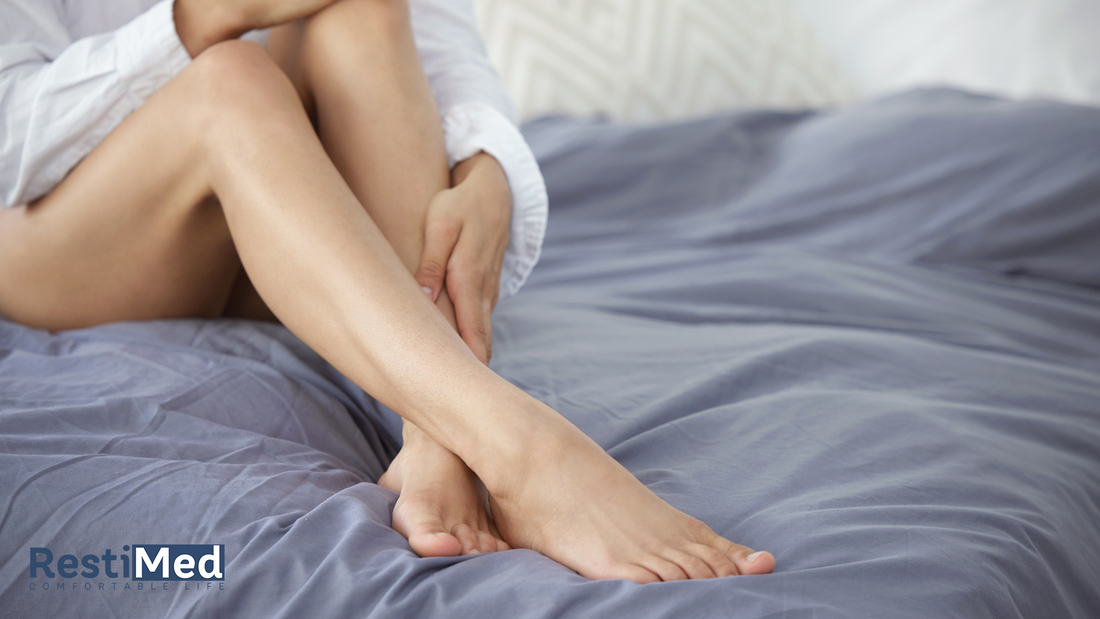
How to Treat Restless Leg Syndrome?
Share
Restless Legs Syndrome (RLS) is a condition characterized by unpleasant sensations in the legs and an urge to move them, typically in the evening and at night. It can interfere with sleep and daily life. There's no single answer to the question "How can I get rid of it?" because the causes of RLS can vary from person to person. However, symptoms can be significantly alleviated with evidence-based lifestyle changes , practical relaxation techniques, and physician-supervised treatment options .
Important note: RLS requires medical evaluation. The information below is for general informational purposes only; consult your doctor for diagnosis and treatment.
Causes and Triggers of RLS
RLS occurs in most people due to a combination of factors. Commonly associated factors include:
- Low iron stores (low ferritin and/or low transferrin saturation)
- Sleep disturbances and insufficient sleep duration
- Caffeine, nicotine, alcohol (especially in the evening)
- Concomitant conditions: pregnancy, kidney diseases, diabetes, etc.
- Medications: some antidepressants and antihistamines (medication changes should never be made without consulting a physician)
Practices That Can Provide Short-Term Relief
- Gentle stretching and short walks
- Warm shower , heating pad or cold/heat application depending on personal tolerability
- Light massage and deep breathing exercises
- Reduce blue light: Stop using screens at least 1 hour before bed
- Movement breaks: Short breaks during long periods of sitting, such as during flights, meetings, or movies.
Sleep Hygiene: Get the Foundation Right
- Try to go to bed and wake up at the same times every day; aim for 7–9 hours of sleep.
- Limit caffeine and nicotine in the afternoon ; reduce alcohol in the evening.
- Keep the room cool, dark, and quiet ; use the bedroom only for sleep and privacy.
- Don't leave heavy exercise until the evening; plan light to moderate intensity activity throughout the day.
- Try not to look at the clock when waking up at night; practice relaxation techniques .
Nutrition and Iron Supplementation
Iron deficiency can worsen RLS symptoms. Therefore:
- If your physician deems it necessary, parameters such as ferritin and transferrin saturation can be evaluated.
- Iron supplementation should not be started “as a precaution” ; too much can be harmful and is not suitable for everyone.
- If deficiency is detected, the cause must be investigated (insufficient intake, blood loss, absorption problem, etc.) and appropriate treatment must be planned under the supervision of a physician .
Daily Routine and Exercise
- Moderate exercises such as regular walking, light jogging, cycling, and swimming during the day
- If you sit for long periods of time, move around for 3–5 minutes every hour.
- Gentle stretching and breathing exercises in the evening; avoid intense workouts close to bedtime
Trigger Control
Keep a symptom diary to track the effects of habits like caffeine, nicotine, alcohol, sleep, exercise, and stress on your symptoms. Once you identify your personal triggers, you can clarify your priority areas for intervention.
Physician Evaluation and Treatment Options
- Laboratory evaluations if deemed necessary (e.g., ferritin, TSAT)
- Oral or IV iron therapy in appropriate cases in addition to lifestyle modification
- Discussing drug treatment options in some patients according to the clinical picture (with physician supervision and regular follow-up)
Common Mistakes
- Starting iron or other supplements on your own
- Exercising intensely at night or consuming caffeinated beverages
- Staying in front of the phone/screen for a long time and constantly postponing bedtime
- Maintaining habits that increase inactivity and not moving in between
Summary
There's no single "magic" solution for RLS; however, a good sleep routine , trigger control , regular and moderate physical activity , and an individualized plan, guided by a physician, can significantly alleviate symptoms. The goal is to reduce nighttime symptoms, repair disrupted sleep, and improve daytime functioning.
Discover Restio: A Support to Help You Regain Your Sleep
If nighttime leg rest is disrupting your daily life and sleep, and you're looking for medication-free, orthopedic support for your daily routine in addition to a medical evaluation, you might want to consider Restio . Restio is designed to help you feel relief from RLS symptoms (results may vary from person to person).
Go to product page →
Note: This content is not medical advice; consult your doctor for diagnosis and treatment.
Source
- American Academy of Sleep Medicine (AASM). Clinical Practice Guidelines for Restless Legs Syndrome.
- Mayo Clinic Proceedings. The Management of Restless Legs Syndrome: An Updated Algorithm.
- Cleveland Clinic. Restless Legs Syndrome (RLS): Causes, Symptoms & Management.
- Sleep Medicine reviews and IRLSSG recommendations: lifestyle, iron assessment and treatment approaches.
